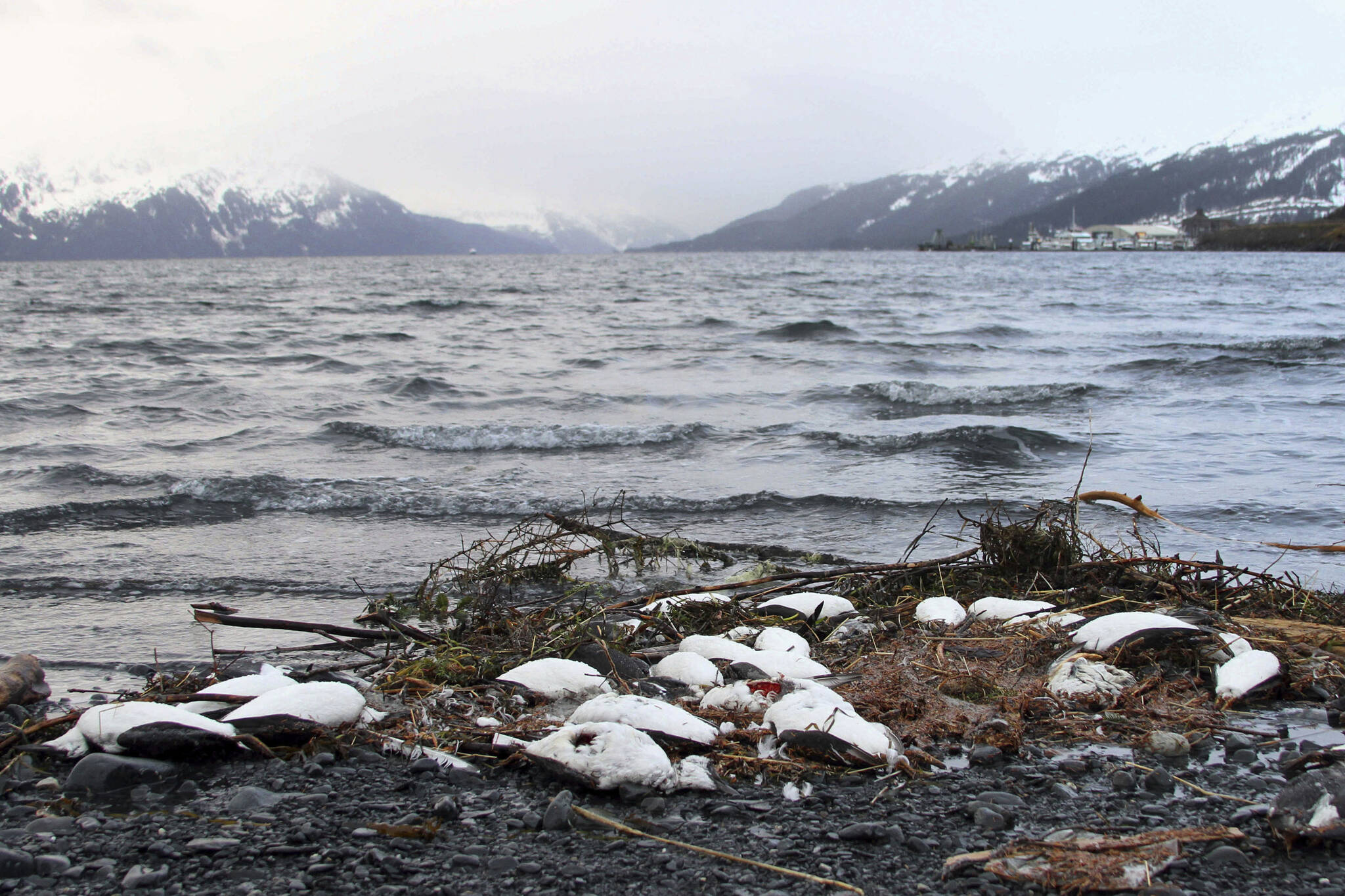WASHINGTON — Dead and dying seabirds collected on the coasts of the northern Bering and southern Chukchi seas over the past six years reveal how the Arctic’s fast-changing climate is threatening the ecosystems and people who live there, according to a report released Tuesday by U.S. scientists.
Local communities have reported numerous emaciated bodies of seabirds — including shearwaters, auklets and murres — that usually eat plankton, krill or fish, but appear to have had difficulty finding sufficient food. The hundreds of distressed and dead birds are only a fraction of ones that starved, scientists say.
“Since 2017, we’ve had multi-species seabird die-offs in the Bering Strait region,” said Gay Sheffield, a biologist at University of Alaska Fairbanks, based in Nome, Alaska and a co-author of the report. “The one commonality is emaciation, or starvation.”
The seabirds are struggling because of climate-linked ecosystem shifts — which can affect the supply and the timing of available food — as well as a harmful algal bloom and a viral outbreak in the region, she said.
And their peril jeopardizes the human communities, as well: “Birds are essential to our region — they are nutritionally and economically essential,” said Sheffield.
The data on seabirds is part of an annual report released by the National Oceanic and Atmospheric Administration, called the “Arctic Report Card,” that documents changes in a region warming faster than anywhere else on Earth.
“With climate change, the food chain is changing rapidly,” said Don Lyons, a conservation scientist at the National Audubon Society’s Seabird Institute, who was not involved in the report. “Food isn’t predictable in the way it used to be, in terms of where the food is, at different times of the year.”
While seabirds naturally experience some lean years, the report documents a worrying pattern, said Lyons. “It seems like we’ve passed a tipping point — we’ve moved into a new regime where events that we used to think of as rare and unusual are now common and frequent.”
In the past year, Arctic annual surface air temperatures were the sixth warmest since records began in 1900, the report found. And satellite records revealed that for several weeks last summer, large regions near the North Pole were virtually clear of sea ice.
“The sea ice extent was much lower than long-term average,” said Walt Meier, a sea ice expert at the University of Colorado Boulder and a co-author of the report.
“The most notable thing we saw was during the summer, we saw a lot of open-water areas up near the North Pole, which was once very rare,” he said. “Several kilometers with very little or no ice, within a couple hundred kilometers of the North Pole.”
“The changes that are happening in the Arctic are so fast and so profound,” said Peter Marra, a conservation biologist at Georgetown University, who was not involved in the report.
Seabirds are metaphorical canaries in the coal mines, when it comes to showing broader ecosystem changes, Marra said, adding, “We need to do a much better job of monitoring these sentinel populations.”

